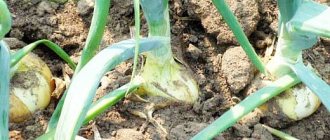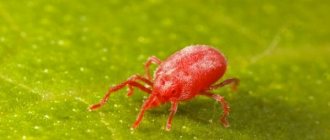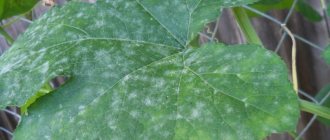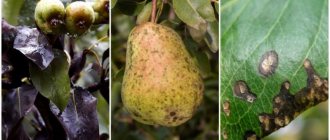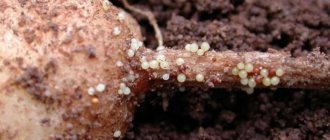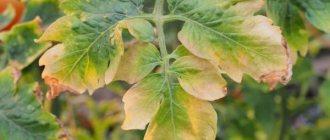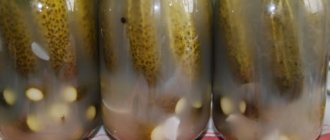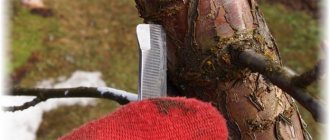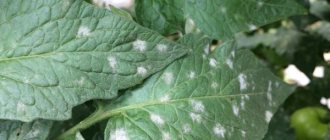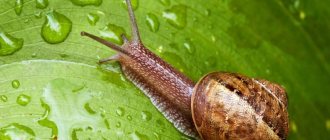Causes and factors provoking gum development
Gommosis is a reaction of cherries to unfavorable factors, the main of which is considered to be mechanical damage to the trunk and branches.
The reasons for the appearance of gum discharge include the following.
Fungal infection
Hommosis is mainly a consequence of a fungal infection. On cherries, gum is formed due to diseases such as clasterosporiasis and moniliosis. The lesions are located on the trunk, on young shoots.
Also, the culprits of the disaster are pests that act as carriers of diseases.
Climatic conditions
Cherries often suffer from low temperatures. After winter, the trunks become covered with cracks and burns. Prolonged thaws provoke warming, which provokes gum formation.
The development of the disease is influenced by factors such as planting in cold, windy areas. Also the cause of the disease is the wrong variety, which must be zoned frost-resistant, less susceptible to frostbite, sunburn, and resistant to high humidity.
Errors in agricultural technology
The cause of the appearance of gommosis is considered to be a violation of agricultural technology during cultivation, namely: increased doses of fertilizers, especially nitrogen, untimely and severe pruning, poor-quality watering, and neglect of preparations for winter.
Prevention methods
It is much easier to prevent the occurrence of gommosis than to waste time and resources on its treatment. Cherry resin appears on weakened and injured trees, which means that with the help of simple preventive measures you can strengthen the cherry and avoid gum development.
To prevent trees from suffering from this disease, you need to do the following:
- in regions with cold winters, grow only those cherry varieties that are characterized by high frost resistance - their wood is less susceptible to damage from low temperatures;
- whitewash the trunk twice a year - this will protect the bark from sunburn;
- for the winter, wrap the trunk with a layer of burlap or thick paper for additional insulation and protection from damage by rodents;
- avoid mechanical damage to the tree bark - its layer protects the cambium (inner part of the trunk) from the effects of adverse external factors;
- regular preventive treatments of cherries against diseases and pests with a 1% solution of copper sulfate - carried out about 3-4 times a year and help strengthen the tree’s immunity;
- correct pruning - it is carried out with a sharp, disinfected instrument so that the cut areas are even;
- treating damaged areas of cherries with garden varnish will prevent harmful microorganisms that can cause diseases from entering them;
- compliance with the dosage and schedule of fertilizer application will provide the tree with all the necessary substances, increasing its resistance to infections and pests;
- furrowing the trunk and skeletal branches - the procedure is carried out in early spring every 1-2 years using a thin and very sharp knife. Furrows on the trunk are applied around the circumference every 15–20 cm, and on the branches - vertically every 8 cm.
How is cherry resin useful for humans?
Cherry resin is often used as a medicine, as it can:
- normalize thyroid function;
- strengthen the heart and cleanse the blood vessels;
- stabilize the digestive system;
- boost immunity
- cure diseases of the liver and pancreas.
See also
Rules and methods for growing cherries from seeds at home
Read
When using this potent substance, it is important to know when to stop, since excessive consumption of gum can cause flatulence and vitamin deficiency.
Use in medicine
Cherry is a tasty way to prevent and treat certain diseases due to its beneficial properties and rich composition.
- Cherry is a product for improving the functioning of the cardiovascular system. This is one of the main properties of this fruit. The blood vessels are strengthened and the pressure is reduced.
- Cherry fruits can kill and fight bacteria. Children, without knowing it, are doing themselves a favor by lubricating their scratched elbows and scratched knees with cherry pulp.
- Due to the presence of coumarin, blood clotting is reduced, which is necessary for some diseases, such as atherosclerosis.
- Cherry juice can cleanse the body of toxins and also improve appetite.
- Joint diseases such as arthritis are alleviated if the pulp and juice are consumed regularly. Gout can be prevented in the same way.
- Ellagic acid prevents cancer cells from developing.
How to treat
If gum disease is detected in cherries, treatment should be started as early as possible. This will prevent the plant from weakening and dying. Control measures include removing young damaged branches and cutting the protruding gum back to healthy tissue using a sharp and disinfected knife. Then treat the cleaned areas with a solution of potassium permanganate, iron or copper sulfate. After drying, apply garden varnish to the entire cut surface.
Preparing the brew
Garden varnish, which you make yourself, is popular as a disinfectant in the fight against gum disease.
Components:
- 4 parts rosin;
- 1 part beeswax;
- 1 part lard.
Preparation: combine the melted lard with the remaining ingredients, then place the resulting mixture on the stove and boil for 20 minutes, let cool, then stir so that the finished mass does not have lumps.
Resin Application
Another effective remedy in the fight against gommosis can be made at home:
Components:
- 2 parts raw flaxseed oil;
- 1.5 parts spruce resin;
- 1 part turpentine;
- 0.5 parts of wheel ointment.
Preparation: heat the resin over low heat, add linseed oil and wheel ointment. Boil the mixture for a long time, then cool and combine with turpentine. Mix everything thoroughly.
Methods for treating cherries from gum
If even small drops of light brown resin appear on the cherry, then you need to immediately begin treatment. At an early stage, providing the tree with the necessary help and eliminating gum disease is much easier than with severe exhaustion, as a result of which the cherry may die.
The main treatments are listed below:
- before starting treatment, the area of gum secretion must be cleaned with a sharp knife until it reaches healthy wood;
- areas affected by gommosis should be treated with a 1% solution of copper sulfate for disinfection;
- damage and wounds on the bark can also be rubbed with sorrel - the procedure is carried out several times with an interval of about 10 minutes;
- treat the injured areas of the tree with garden varnish - to prepare it, you need to melt lard, adding beeswax and rosin to it (the ratio of ingredients is 1: 1: 4), and then boil the mixture for 20 minutes and cool;
- You can use ready-made antimicrobial drugs for treatment (for example, “Farmayod”) - they are applied to the cherry bark according to the instructions on the package;
- a tree infected with gommosis can be generously sprayed with “Nitrophen” - 400 g of the drug will be needed per bucket of water;
- you can treat the affected areas with a product made from linseed oil, spruce resin and wheel ointment (the ingredients are taken in a ratio of 4:3:1) - the mixture is boiled on the stove, and then cooled and 2 parts of turpentine are added;
- A mixture of 400 g of melted and cooled resin, 50 g of alcohol and 25 g of flax oil has a good disinfecting effect - knead the product a little with your hands and apply to the damaged areas;
- to treat areas with gum, you can use a garden varnish made from rosin and lard (ratio 16:1) - the ingredients are mixed and melted over a fire, and 8 parts of alcohol are added to the cooled product.
Video: how to deal with gum bleed
How to prevent the recurrence of gommosis
Gum development is easier to prevent than to treat for a long time. Knowing the reasons, you can quickly take measures to prevent its recurrence:
- Handle cherries in the fall with care, without injuring them. Many gardeners, when removing the bark, leave young, immature tissue defenseless before wintering. As a result, they are exposed to frostbite, which can lead to deterioration in the health of the plant.
- Choosing the right variety. It must be maximally suitable for cultivation in a specific area, taking into account its climatic characteristics, be characterized by frost resistance and have good disease resistance. For each region there are zoned cherry varieties that you should bet on.
- Reliable trunk protection. In order to protect the plant from sunburn, gardeners bleach the trunks and bases of skeletal branches at least 3 times a year - in summer, autumn, and winter. Also, before winter, wrap the trunks using burlap and spruce branches, this will additionally provide the tree with protection from rodents.
- Timely pruning. To prevent gum growth, you need to remove young shoots throughout the summer, preventing them from reaching the lignification phase. Small wounds on the plant heal faster; pruning stronger stems in the future will be painful for the cherry.
- Adding nutrients. To increase the tree's resistance to stress, it is necessary to fertilize it in a timely manner, but not to get carried away with fertilizers containing nitrogen. It is also important to prevent the development of infections and pest invasions by spraying trees with fungicides.
- Carrying out furrowing of the trunk and skeletal branches. This procedure should be carried out in the spring before the start of sap flow, repeating after 1-2 years, using a thin, sharp knife, otherwise, instead of benefit, you can cause harm to the tree.
See also
Description and pollinators of the Lyubskaya cherry variety, planting and care
Read
Preventive action
- However, as usual, instead of selflessly fighting “later”, it is better not to allow “before” at all. Try to select varieties that are disease resistant and have high winter hardiness. Take preventive measures to prevent mechanical damage to plants. Protect trees from sunburn of the trunk and skeletal branches by whitewashing in the fall and spring.
- Prevent the appearance of frost cracks by wrapping trunks and skeletal branches with paper, matting, etc. Some experienced gardeners even recommend making shallow, anticipatory furrows on the trunk and skeletal branches with a knife. These furrows can be controlled and help the tree gain thickness without causing deep injury. But this is a method more likely for “advanced” gardeners.
- Any pruning injures the tree and therefore should be carried out only in a timely and correct manner, with the obligatory covering of the wounds with garden pitch or other specified materials.
- It is imperative to carry out the entire necessary range of control against pests and diseases that cause damage to trunks, branches, and shoots. The environmentally friendly biofungicide “Mikosan-B” will help protect the tree from fungi, bacteria, viruses, and therefore increase the chances that the plant will not develop gum disease. Spray 1-2 times before flowering. In this case, even the trunk and skeletal branches should be processed.
- It is very important to follow proper agricultural practices when growing plants. Do not overfeed trees with nitrogen fertilizers, which cause excessive growth. When planting, place stone fruit trees, especially those suffering from gommosis, in places with light, breathable soil. Do not let the tree bark in the area of the root collar be exposed to heat. Ensure timely watering. It is preventive measures that should become the main factor of success in the fight against gommosis.
